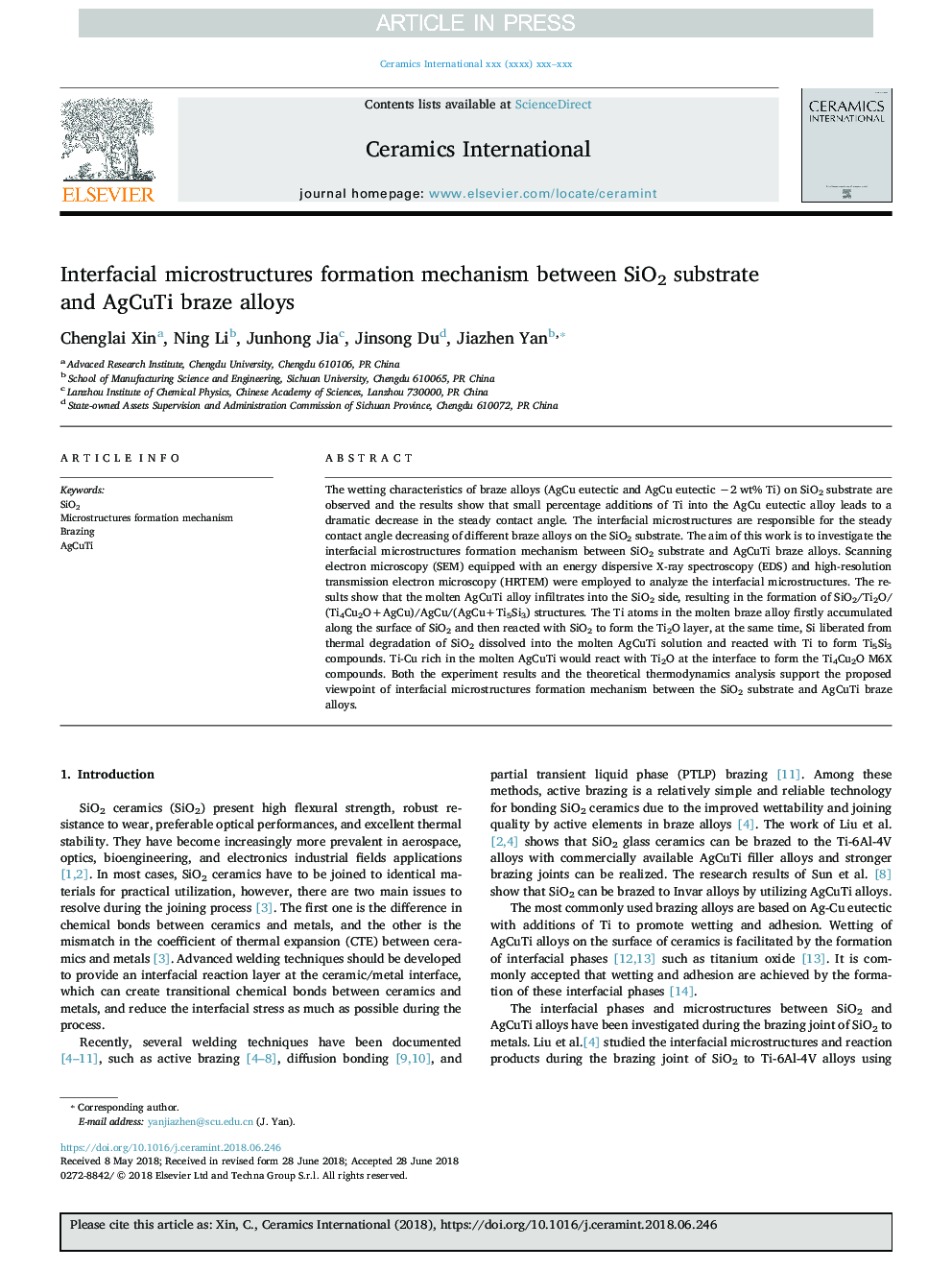| Article ID | Journal | Published Year | Pages | File Type |
|---|---|---|---|---|
| 8948450 | Ceramics International | 2018 | 8 Pages |
Abstract
The wetting characteristics of braze alloys (AgCu eutectic and AgCu eutectic â2â¯wt% Ti) on SiO2 substrate are observed and the results show that small percentage additions of Ti into the AgCu eutectic alloy leads to a dramatic decrease in the steady contact angle. The interfacial microstructures are responsible for the steady contact angle decreasing of different braze alloys on the SiO2 substrate. The aim of this work is to investigate the interfacial microstructures formation mechanism between SiO2 substrate and AgCuTi braze alloys. Scanning electron microscopy (SEM) equipped with an energy dispersive X-ray spectroscopy (EDS) and high-resolution transmission electron microscopy (HRTEM) were employed to analyze the interfacial microstructures. The results show that the molten AgCuTi alloy infiltrates into the SiO2 side, resulting in the formation of SiO2/Ti2O/(Ti4Cu2O+AgCu)/AgCu/(AgCu+Ti5Si3) structures. The Ti atoms in the molten braze alloy firstly accumulated along the surface of SiO2 and then reacted with SiO2 to form the Ti2O layer, at the same time, Si liberated from thermal degradation of SiO2 dissolved into the molten AgCuTi solution and reacted with Ti to form Ti5Si3 compounds. Ti-Cu rich in the molten AgCuTi would react with Ti2O at the interface to form the Ti4Cu2O M6X compounds. Both the experiment results and the theoretical thermodynamics analysis support the proposed viewpoint of interfacial microstructures formation mechanism between the SiO2 substrate and AgCuTi braze alloys.
Related Topics
Physical Sciences and Engineering
Materials Science
Ceramics and Composites
Authors
Chenglai Xin, Ning Li, Junhong Jia, Jinsong Du, Jiazhen Yan,
